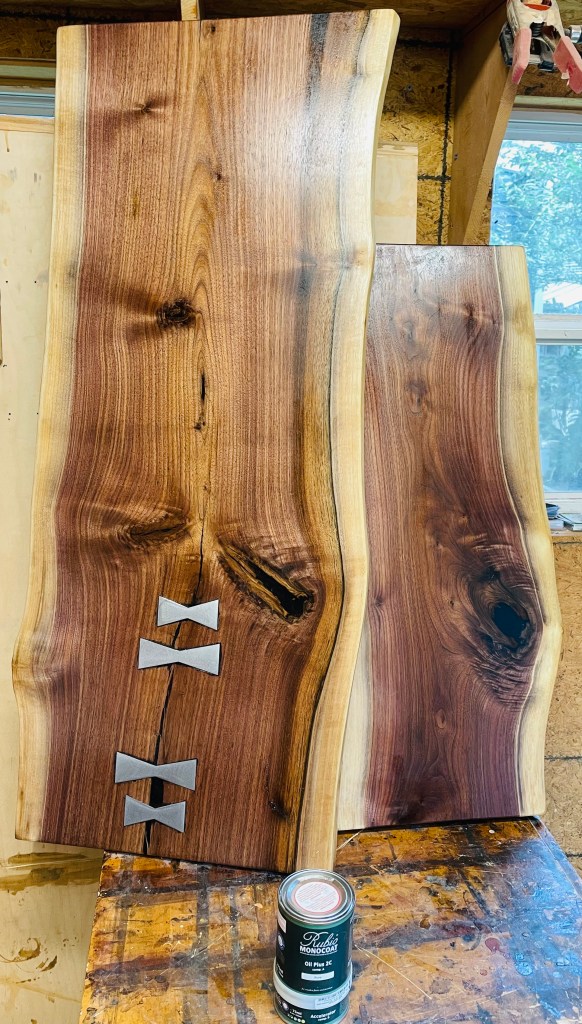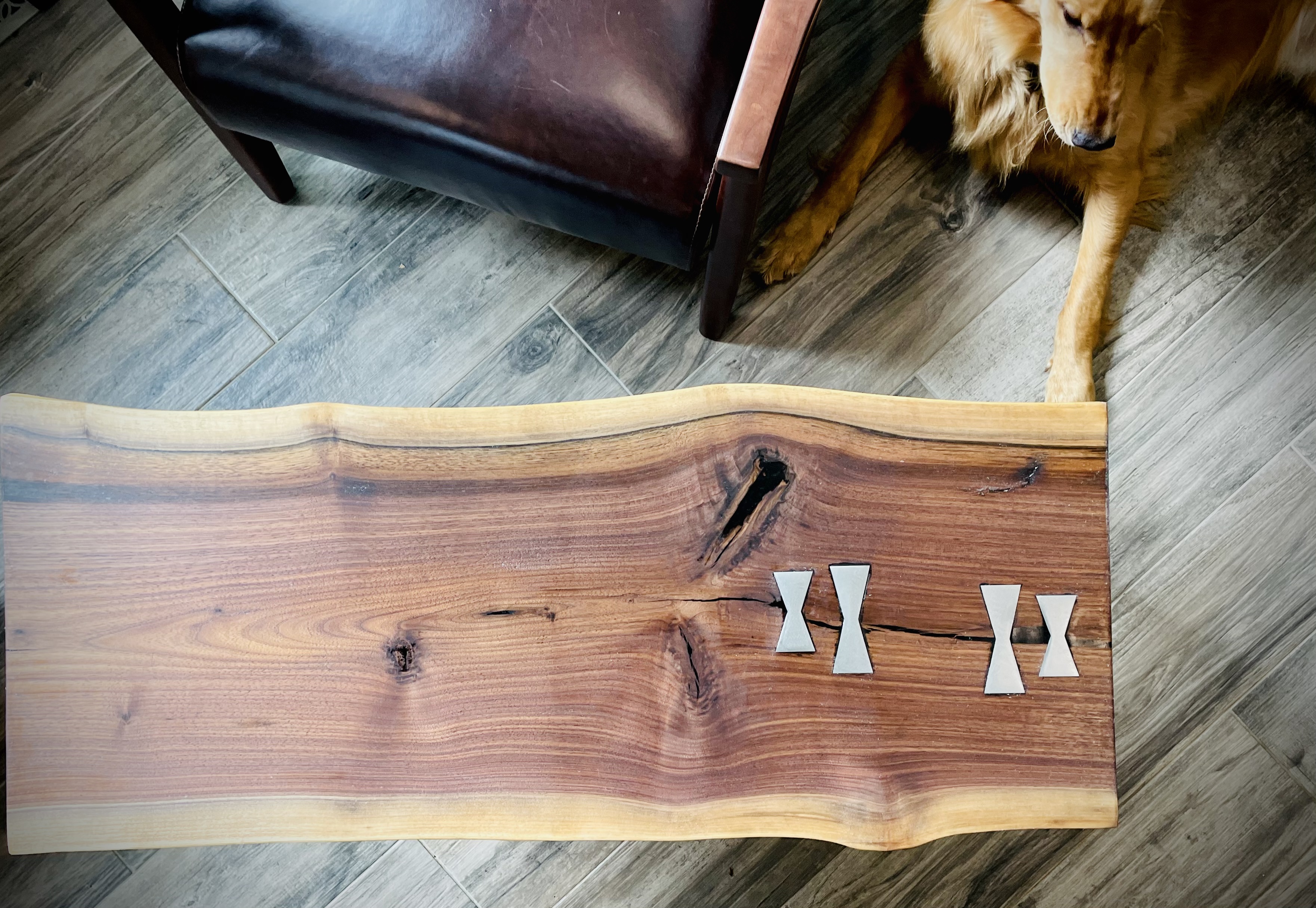Your cart is currently empty!
One evening a friend of mine and I where out eating dinner, and he mentioned wanting a coffee table made from a live edge slab, additionally he wanted colorful resin accents. Essentially, a ”river table”
River tables are all the rage these days, they can be beautiful, elegant or rather tacky. For this reason some people love them while others hate them, I consider myself, river table neutral. In many cases using resin is the right thing to do, however some river tables end up looking like colored plastic, sandwiched in wood, for no good reason.
I’m in favor of using resin in the same fashion as Kintsugi, which is the Japanese art of repairing broken pottery by mending the areas of breakage with gold.
Having just acquired some live-edge walnut slabs (live-edge means; the wood has bark on one or both sides) containing substantial cracks, It got me thinking, this could be the perfect project to use this otherwise “broken wood”. The crack could be addressed in two ways, a bow tie to span the crack, and then with resin to fill the void for a smooth surface which could then be placed in front of a couch. This is what we call a coffee table, even if the recipient doesn’t drink coffee…
What is a bow tie?
A bow tie joint; also called a butterfly joint, dovetail key, or a Dutchman joint, is a type of joint or inlay used to hold two or more sections of wood together. These types of joints are mainly used for aesthetics, while reinforcing/supporting the cracks in the wood.
What I want to build; is not want the customer thinks he wants…
I shared with Nick (my friend who thought he wanted a river coffee table) my idea and he was a bit hesitant, but after a few talks he agreed with my assessment but wanted to use metal for the bow tie instead of wood. I mean he had a point; saying “The metal bow tie will match the metal legs I want”.
You may think what’s the big deal, like Nick did; I mean he said it over and over… It’s a big deal! You see, wood is more forgiving than metal (duh). Bow ties are best installed a bit proud (higher than) what they are being plugged into. Then the woodworker (me, in this case – note I’m not a metal worker) sands everything down to get that smooth top, plus the sanding will actually fill any voids that was left in the process. This is not the case using METAL bow ties.
Nick found a metal bow tie supplier and had them shipped to my front door. Meanwhile using my Wood Slab Flattening Jig to get the slab nice and flat, I was ready to address the crack. Below are some images of the bow tie installation. Basically the blue tape was used to help mark out the sections to remove. Using a router set the depth of cut to be equal to the thickness of the METAL bow tie. then hog out the material, use a chisel to cut out the sections close to the tape for a perfect fit. Now for the fun part grab a big mallet and pound it in.








Next fill the crack with black resin epoxy and attach the legs that he also had delivered to my door. Take a picture with a handsome dog and 3-2-1 bam all done.



Altivista, Virginia with my dad, looking over some walnut slabs that my brother Mark helped mill and held for me.
The finished table.


Leave a Reply